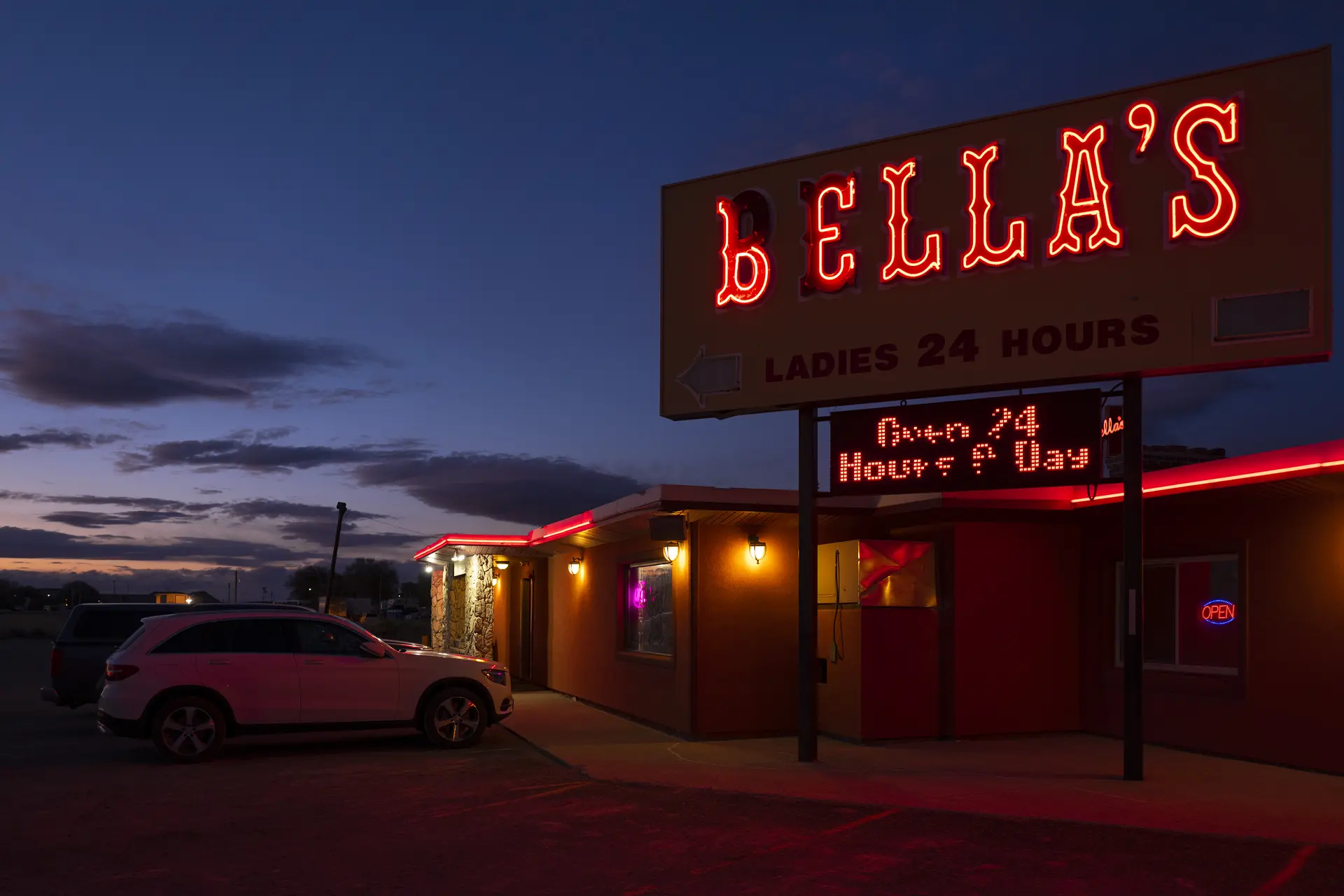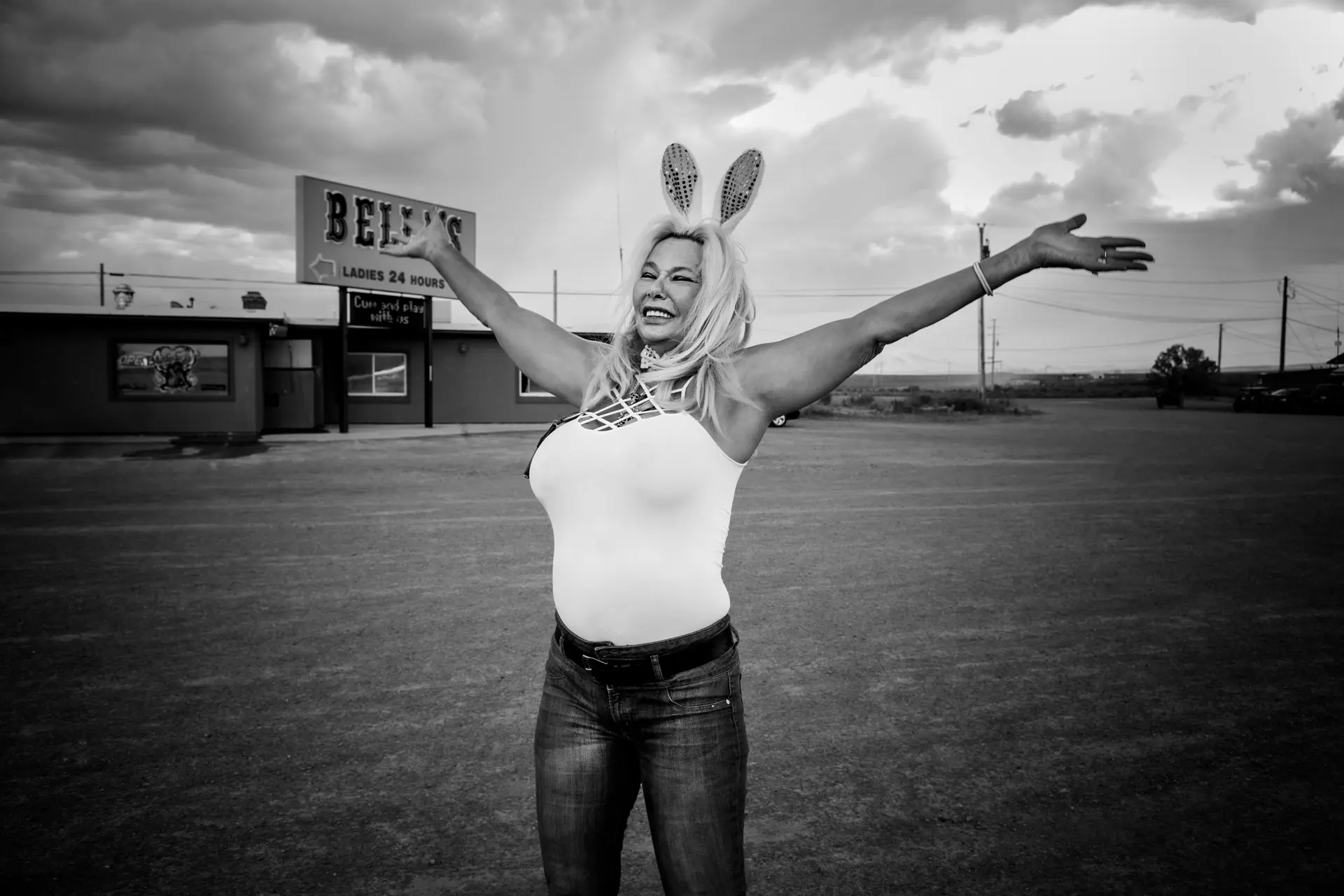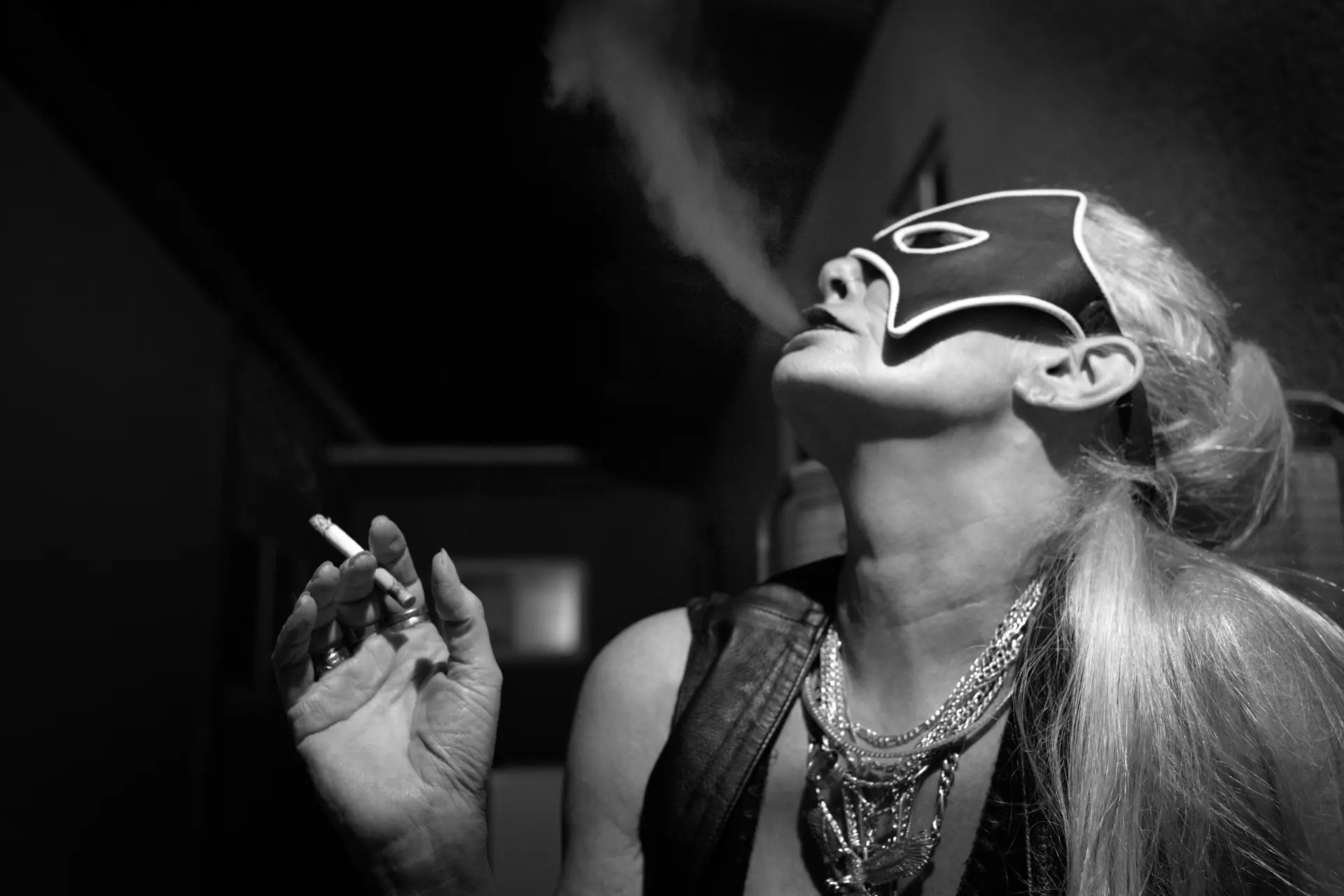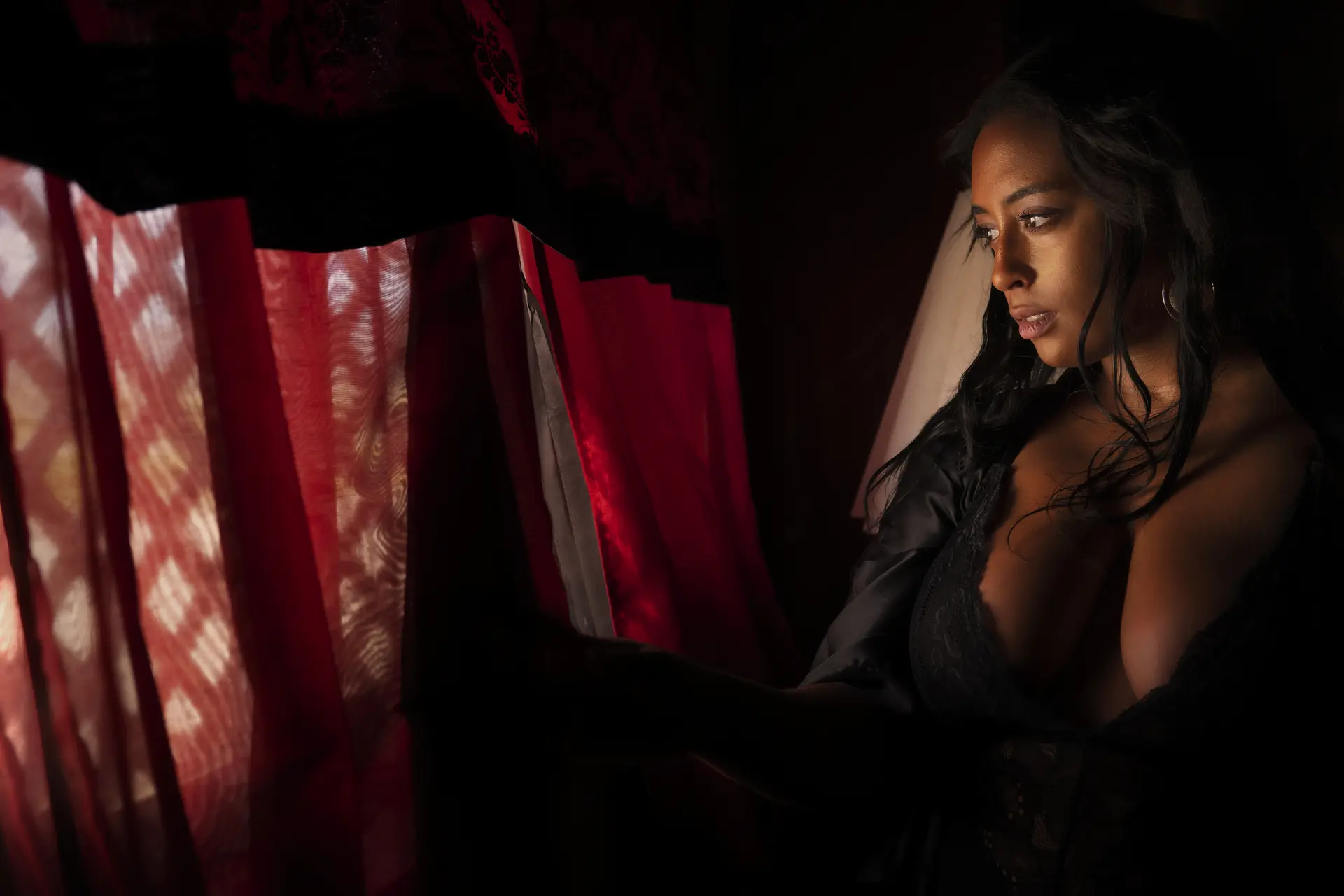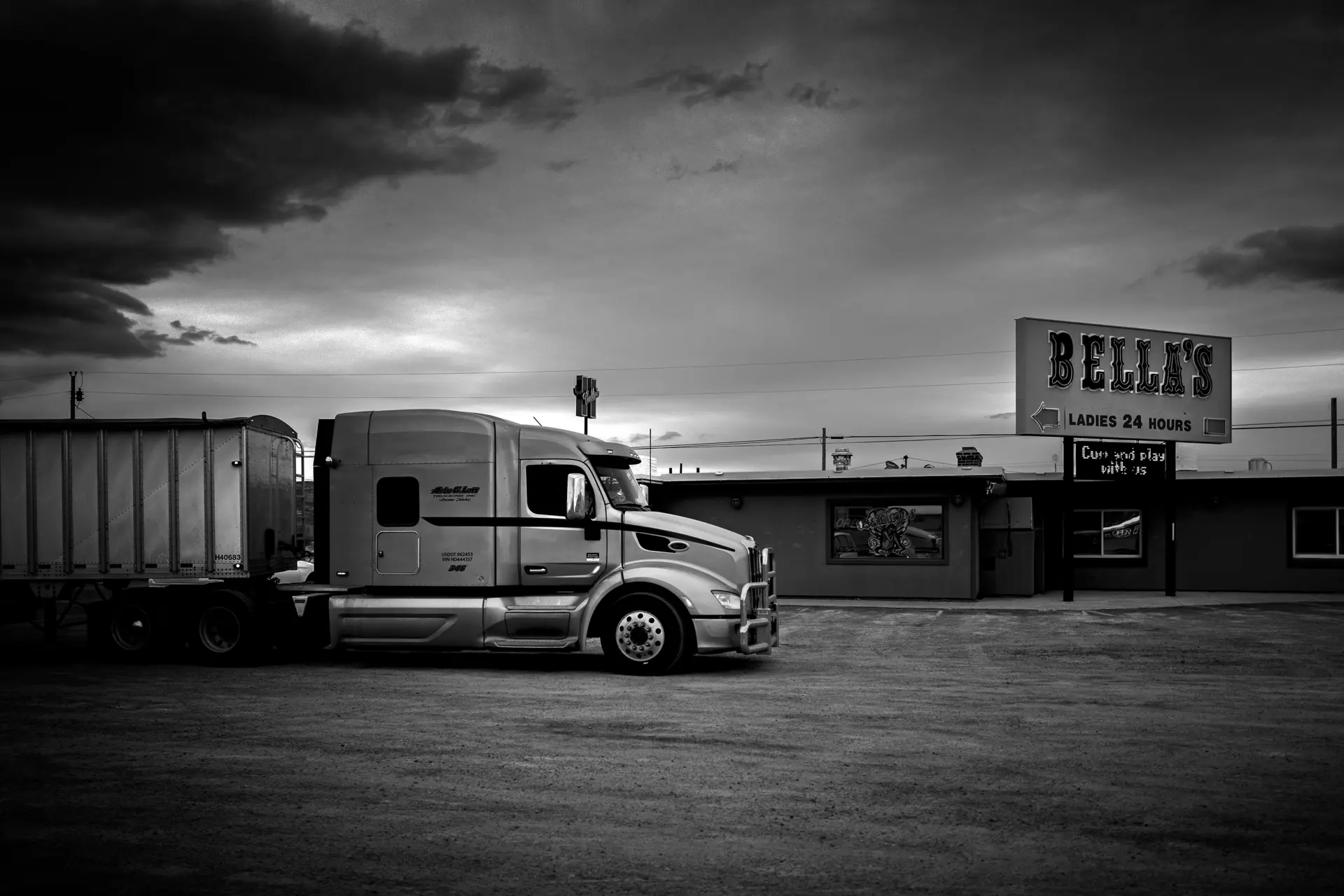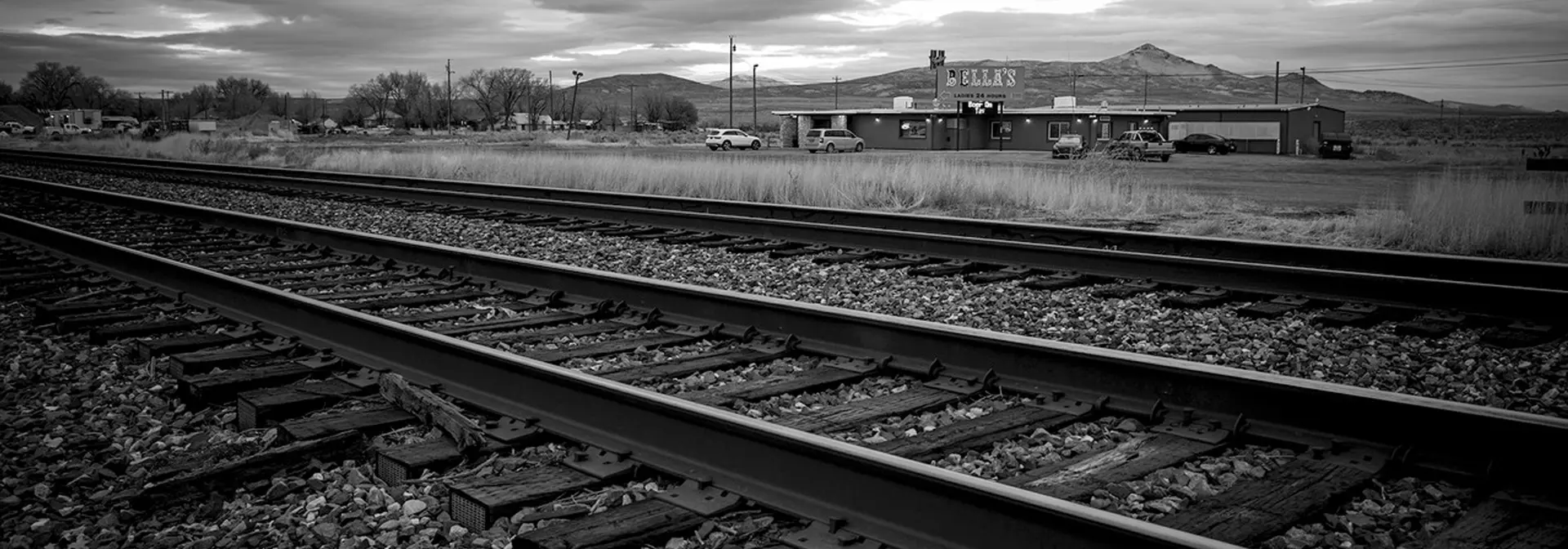
Her Legacy
Victory Tischler-Blue
A former member of the iconic ‘70s all-girl rock band The Runaways, Victory Tischler-Blue is an independent feature film producer/director and fine art photographer whose dark and highly stylized tableaux evoke a deep sense of melancholy, tension and cinematic drama. Read what inspires her creative approach to photography.
1. What is the story behind "Wild Dogs"?
WILD DOGS is a dark, edgy photo and documentary motion series revolving around a traditional Nevada brothel, the individual stories of the women who work there, and the culture that surrounds and supports both. The imagery is raw, elegant, hard-core, and emotionally charged; and chronicles the day-to-day life of female sex workers who refer to themselves as “courtesans” – an old fashion euphemism for an elite prostitute who, through the art of refined sensual seduction provides flesh and fantasy for the clients they serve.
The series is set deep in the Nevada desert; far beyond the seediness of the Las Vegas Strip; miles down long, lonely stretches of vanishing point highways - way out past the places where the wild horses roam. The location is untamed and feral – providing a stark backdrop for the delicate balance of life on the fringe, which comes at a cost in a profession as old as time itself.
2. What intrigued you to pursue a project like this?
As an independent film producer/director, I’m always drawn to dark dramatic subject matter and a strange, disjointed version of reality, where what appears to be isn’t always as it seems. For me, the creative potential of those two elements, combined with the remote and desolate location of the brothel – across the obligatory train tracks, on the outskirts of a small town that had already died a slow, suffocating death when the railroad was replaced by the interstate – was too good an opportunity to pass up. I approached this project as I would a feature film. I identified my characters, and their roles, and began to document the narratives that unfolded in front me, as I saw and felt them.
3. What challenges did you encounter during this journey?
Over the eight months I was shooting there, on and off, there were many challenges and real-life struggles. The two biggest were gaining the kind of behind-the-scenes access to the brothel that would allow me to document it in-depth, and also earning the trust of the ladies who worked there. Both took a lot of time and patience, and a constant mantra ran through my head: “stay steady – no sudden moves”.
There are approximately 20 legal brothels in the State of Nevada and, as far as I know, this is the only one both owned and operated by a woman. I had met the Madam there a couple of years earlier and stayed in touch her, in the hope that one day I could photograph life inside the brothel.
I don’t think any young girl dreams of becoming a sex worker when they grow up – but life is unpredictable and, for some of the ladies who have pursued that journey, trust is a huge issue. I’m beyond grateful they gave me the benefit of the doubt; not only inviting me into their world, but allowing me to document it in its rawest, most intimate form. What a gift!
A lot of people ask me what it‘s like on the ‘inside’ – so here’s how it all went down:
When we first arrived at the brothel, my assistant Chris and I were greeted by the Madam and she brought us into a bar area. Once we were settled in, she rang a bell that sounded throughout the building. Almost immediately, several girls appeared in beautiful, sexy lingerie and heels, lined up in front of us and introduced themselves. We were each told to choose a girl. I chose “Bobbie”, an older blonde with massive G-cups and a sexy smile. She took me by the hand and led me down a darkened hallway. Our first stop was the ATM machine, the next stop was the dungeon – Bobbie’s domain. After that, we ended up in the “negotiation” room, where Bobbie engaged me in a discussion about my hopes and dreams. From there, she led me back into her dungeon… and the rest was captured on film.
4. Of all the images you have made from this series, which one is most important to you?
The image that affected me the most is one I shot of Bobbie that didn’t make it into the WILD DOGS show. We were outside and she was standing in a field of tall grass behind the brothel wearing faded blue jeans, a tight white top and bunny ears. I asked her what her life-goals were and without missing a beat told me that she just wanted to be “the best she could be…”. Her answer came quick and straight from the heart. What more could anyone ask for?
5. What photographers inspire you or have influenced you on your visual journey?
I’m inspired by so many photographers that it’s really hard to pinpoint one, but on the top of the list is Helmut Newton. I was in my late teens when I first flipped through Helmut Newton’s White Women book and was so taken by the erotic imagery and locations.
I also love Robert Frank - especially the work he shot for the Rolling Stones / Exile On Main Street album. When that album was released, I had never seen photography like that and it blew my mind. I sat in my bedroom listening to that double album and stared at the cover, liner notes and everything else that came inside for years. I was obsessed. I still am.
6. What camera gear did you use for this project?
I photographed most of this series on a Leica “Your Mark” Monochrom Typ 246. On a technical level, shooting moving targets in extreme low-light environments was challenging because I had to move fast, under unpredictable circumstances and zone focus. I felt like I pushed that camera to its limits in those high ISO / low-light / wide open conditions and was incredibly pleased with the way the digital noise translated into a gorgeous film grain. The Monochrom is and always will be my camera of choice. I’m looking forward to getting the M10 Monochrom next.
I also used my Leica SL, Leica S, Leica Q2 and Leica M7 on this project.
7. Tell us how you first got started with photography.
I was a sensory kid and developed a love for photography at a really young age but had a hard time wrapping my head around f-stops, apertures and film speeds. Shooting film was something I just couldn’t master – so I abandoned it. It wasn’t until I was in my band The Runaways and constantly in front of the camera that I fully realized my passion for photography. I found I enjoyed being in photo studios a lot more than being on stage. Around that same time, the film “The Eyes of Laura Mars” was released and it sent me completely over the edge. I had never seen anything like the sexually charged Helmut Newton / Rebecca Blake imagery in that film and it triggered a landslide in me. I felt I had found my true North.
I shoot real – not pretty. I shoot dark drama. There is a moment. A sweet spot. An emotional exchange that happens in a blink of an eye when someone will just give it up and everything rises to the surface. I live for that emotional release - it’s pure magic.
There’s always a minor chord running through my projects – whether it’s a motion picture or a still image - everyone has a story - some are just darker than others.
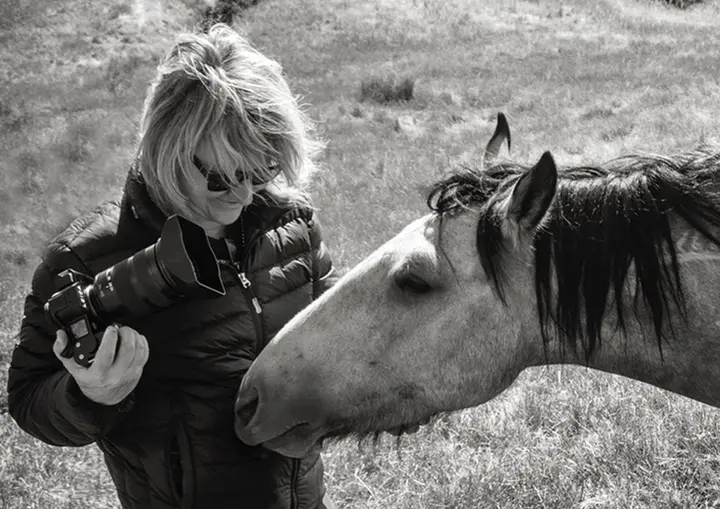
Connect with Victory
Her story doesn't end here.
Continue the journey with Victory on social media:
Instagram: @victorytischlerblue
Facebook: Victory Tischler-Blue
Website: https://desertstudiosllc.com
